iPhone 15 Pro A17 Pro: Everything we know about Apple's fastest iPhone chip yet
Games like Assassin's Creed Mirage now run on iPhone
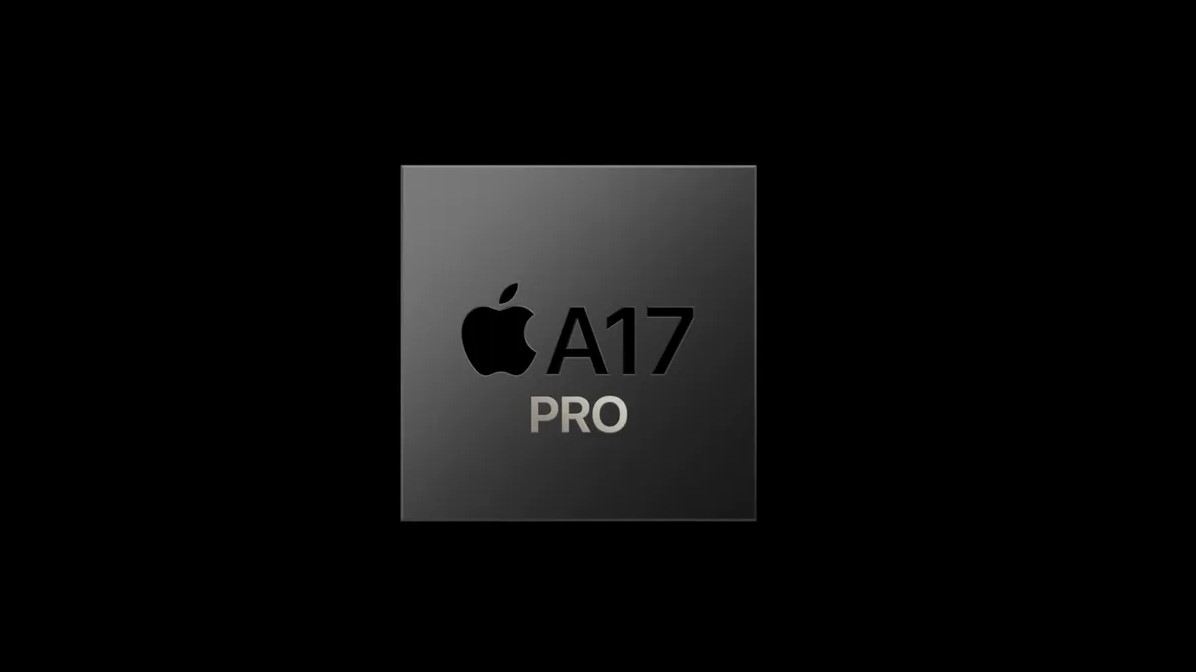
We got our first glimpse of the new iPhone 15 series today at the September 2023 Apple event, where Tim Cook & Co. unveiled it and its more powerful siblings, the iPhone 15 Pro and iPhone 15 Pro Max.
We were expecting as much, but what we weren't expecting was a redesigned slice of Apple silicon powering just the Pro and Pro Max models of Apple's latest iPhone. While the iPhone 15 and iPhone 15 Plus will come with the same A16 Bionic chip that powers the iPhone 14 Pro and iPhone 14 Pro Max, the beefier versions of Apple's latest phone will be driven by a new A17 Pro chip that's Apple's smallest yet.
The company spent a good deal of today's iPhone 15 time talking up the promise and potential of an iPhone powered by this new chip, and we learned a lot about how Apple's most advanced iPhone chip yet works. Here's everything we know so far about Apple's A17 Pro chip.
iPhone 15 A17 Pro: Price and release date
The A17 Pro will only be available in Apple's new iPhone 15 Pro and iPhone 15 Pro Max smartphones, which should become available for pre-order September 15, and start shipping September 22.
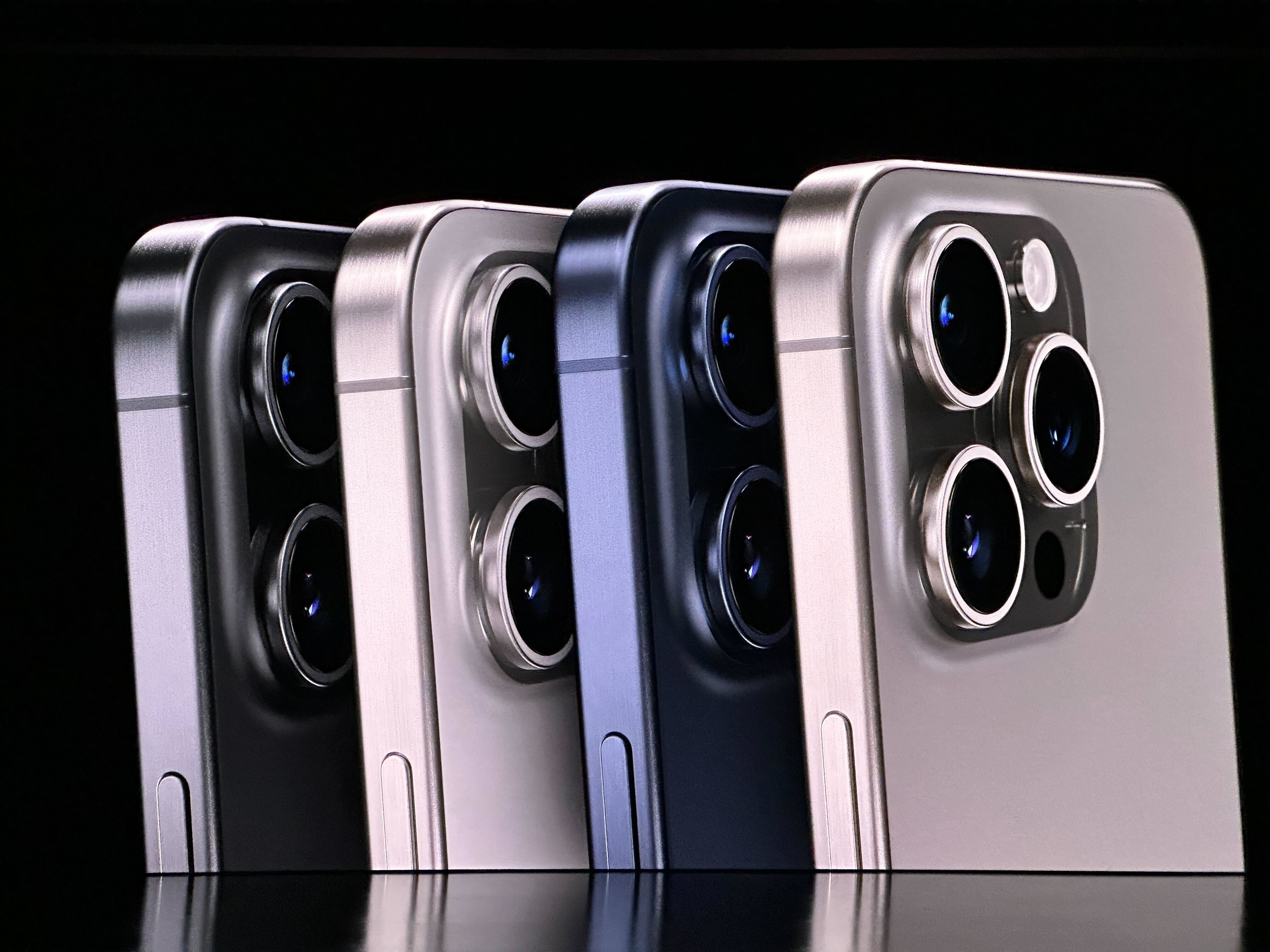
Price-wise, expect to pay a premium for this chip. The iPhone 15 Pro will cost at least $999, which gets you a model with 128GB of storage. The iPhone 15 Pro Max starts at $1,199, and it comes with 256GB of storage to start.
iPhone 15 A17 Pro: Specs
We don't yet have the full specifications for the new A17 Pro chip, but Apple did tell us a lot about how it works and what's inside while promoting the iPhone 15 Pro.
The most notable detail is that the A17 Pro is built on a 3-nanometer process, which (put very simply) means it can fit more transistors on a chip than one fabricated using a 4 nm process, which is what was used to build the A16 chip from the iPhone 14 Pro and the new iPhone 15.
Sign up to get the BEST of Tom's Guide direct to your inbox.
Get instant access to breaking news, the hottest reviews, great deals and helpful tips.
Apple claims this is "the industry's first 3-nanometer chip" and it is indeed the first time I've seen a chip built on a 3nm process in a device you can actually buy (when iPhone 15 preorders open later this week).
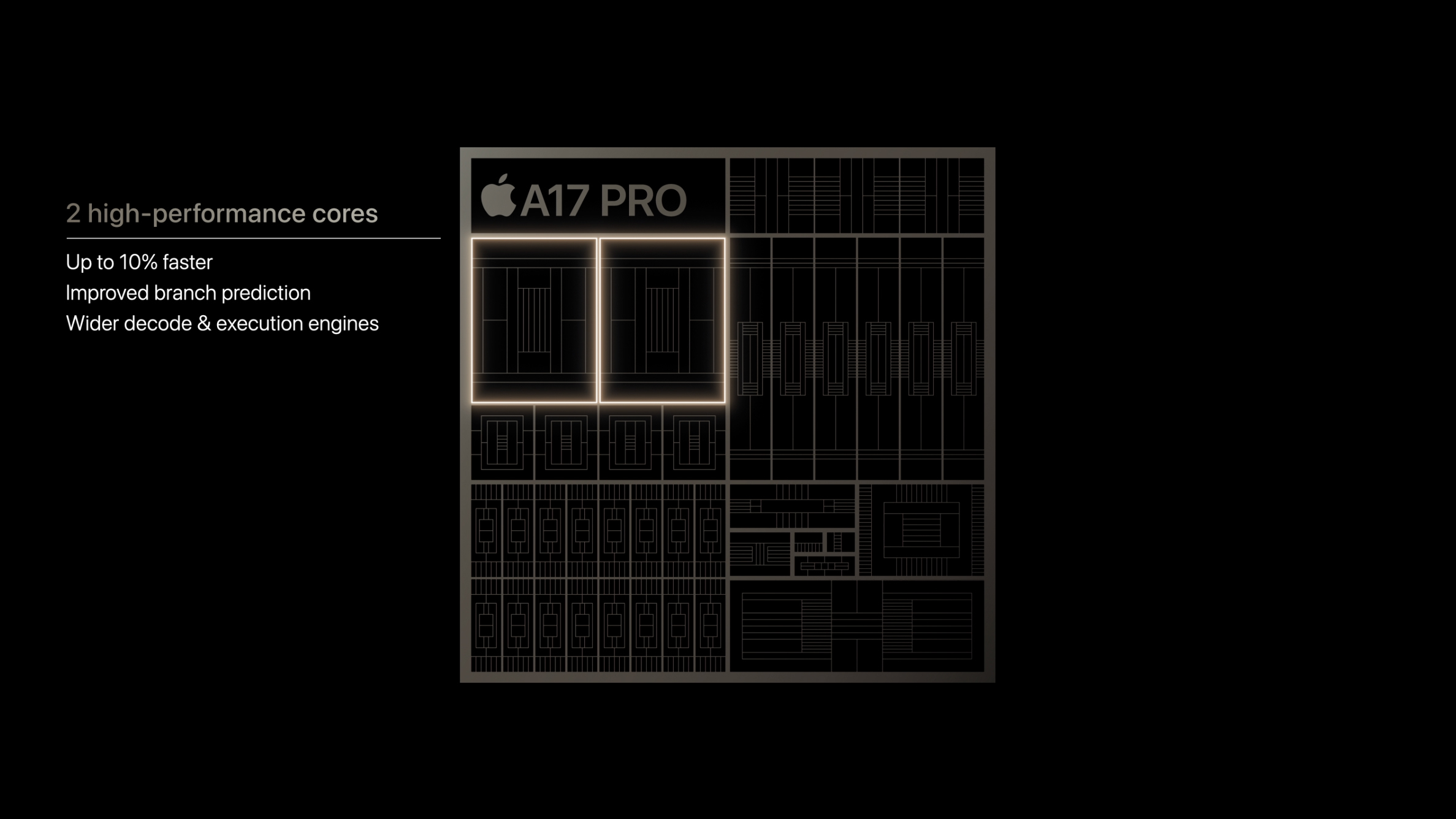
The A17 Pro still sports a six-core CPU like its predecessor, with two high-performance cores and four efficiency cores, but Apple claims it's up to 10% faster due to architectural improvements. The company also claims the 16-core Neural Engine can function up to twice as fast as its predecessor when tackling NPU-centric tasks like autocorrect.
There's also a new dedicated AV1 decoder on the A17 Pro, which means you should expect streaming video to look better. You should also expect faster file transfer speeds via the new iPhone 15 USB-C port that the EU forced Apple to add, as well as the potential to output HDR video to an external display at up to 4K resolution and 60 frames per second.
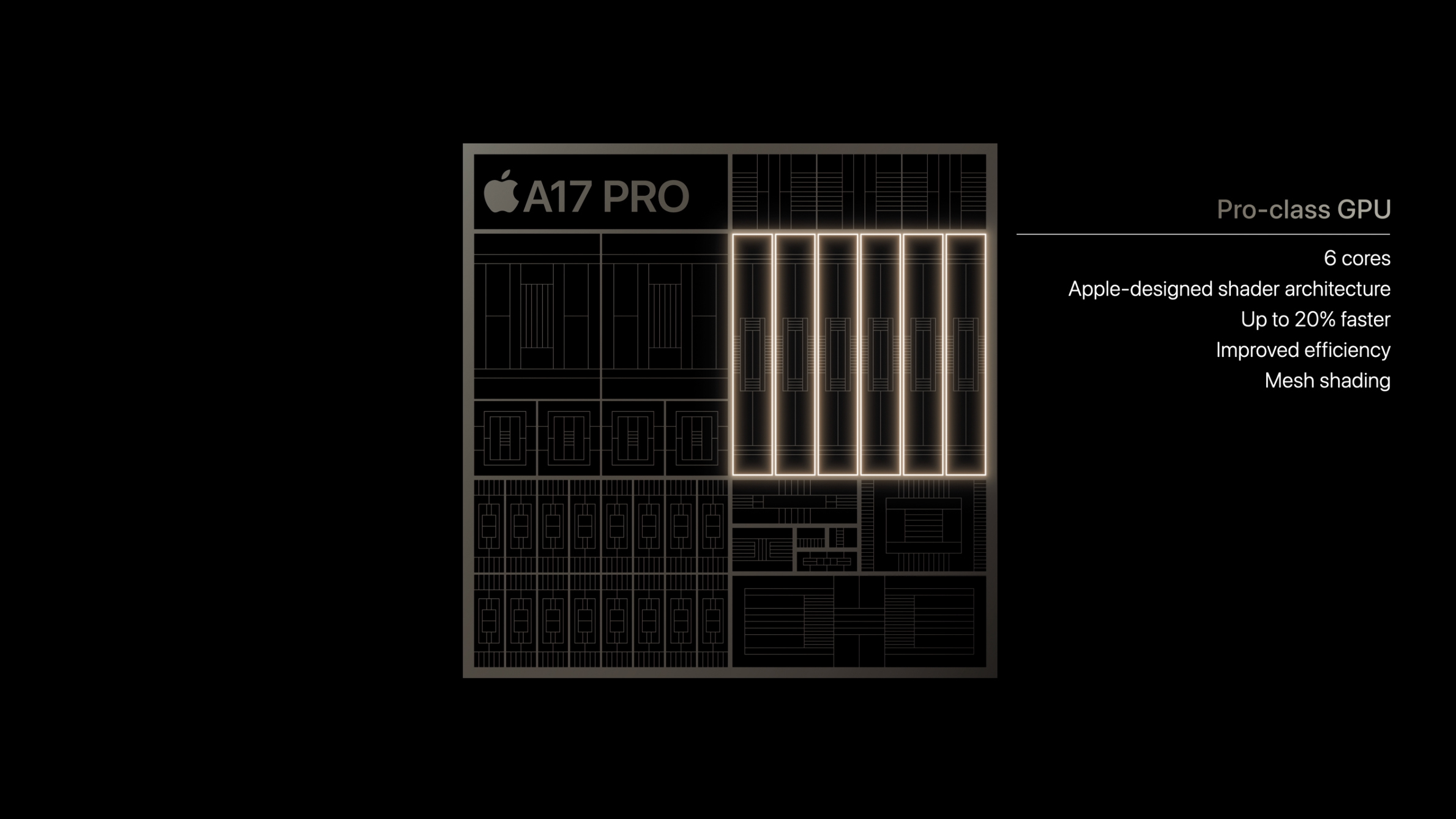
Apple's other big talking point for this chip is the redesigned GPU, which has 6 cores (instead of the 5 you get on the A16) and is advertised as being up to 20% faster than the A16's GPU. Apple claims it "unlocks entirely new experiences," thanks in part to custom shader architecture and support for hardware-accelerated ray tracing, which is faster and more efficient than software-based ray tracing—up to 4x faster than the software-based ray tracing performed by the A16, for example.
If you're not familiar, ray tracing was the hottest new thing in video game graphics a few years back. Put simply, it's a means of dynamically rendering light in a more accurate manner by calculating how each ray of light moves and bounces through a scene. It's incredibly demanding work that allows you to render more realistic, believable environments where light and shadows shift in response to environmental changes.
iPhone 15 A17 Pro: Gaming potential
The fact that ray tracing was a big talking point at Apple's iPhone event shows that the company continues to at least pay lip service to the importance of gaming on its platform. Factor in the fact that game developers from the likes of Capcom and Ubisoft made cameo appearances during the event, and it's easy to believe game devs are eager to embrace the gaming potential of the iPhone.

While Apple certainly runs one of the most popular gaming platforms in the world if you're talking about free-to-play mobile games, the company appears to be angling the iPhone 15 Pro at a more demanding crowd. Apple showcased a number of big-budget console games running on the iPhone 15 Pro's A17 Pro chip during its September event, including recent and upcoming titles like Resident Evil 4, Resident Evil Village, and Assassin's Creed Mirage.
The company claims its redesigned A17 Pro GPU uses mesh shading to more efficiently render detailed environments, and MetalFX tech taps the GPU and Neural Engine to upscale game graphics (that is, initially render them at a low resolution that runs faster and then intelligently 'upscale' the graphics in real-time to make them look better) for more efficient performance.
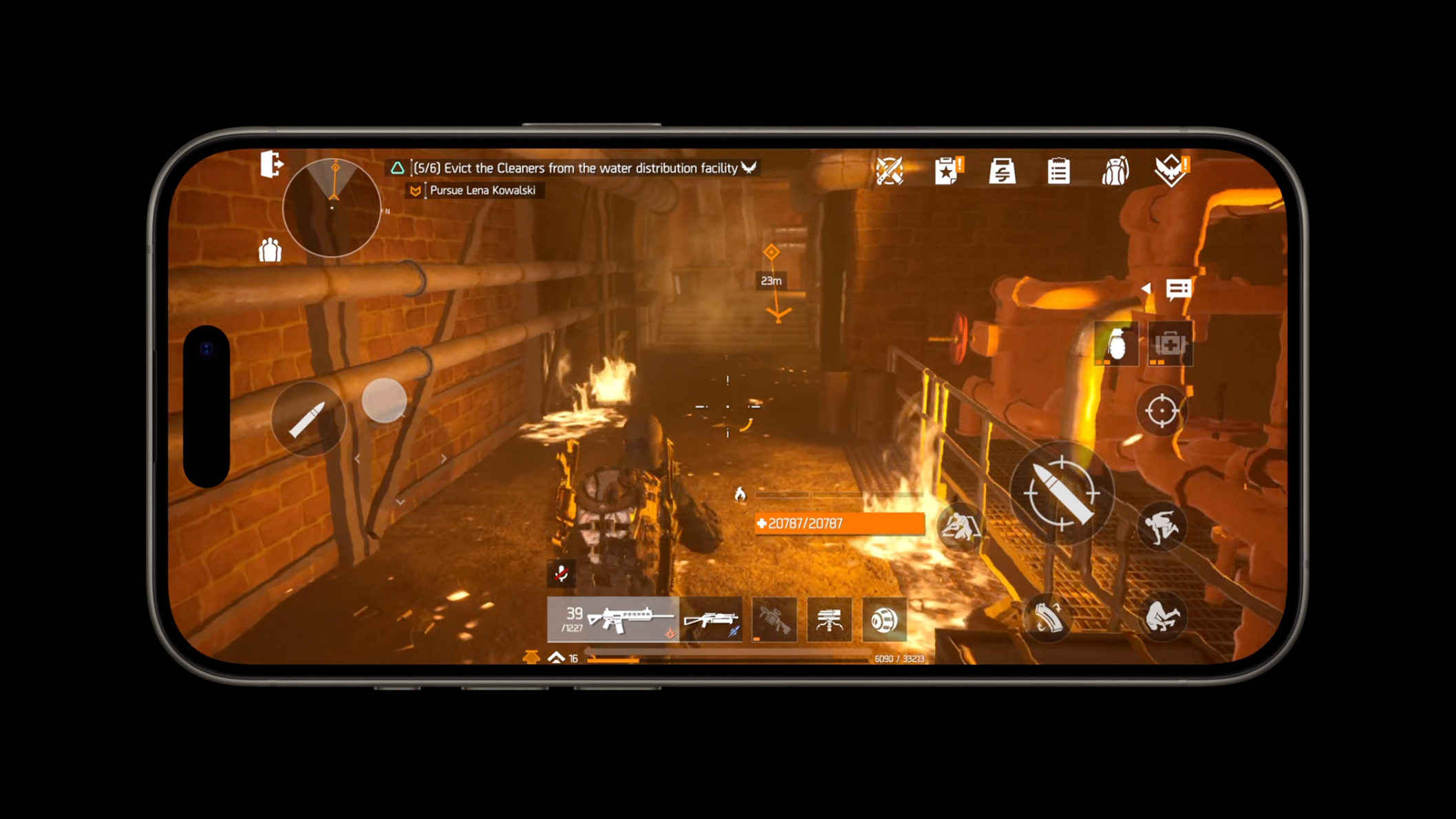
Seeing Resident Evil running smoothly on an iPhone was pretty neat, but unsurprising given how closely Capcom has worked with Apple to do things like get Resident Evil Village running well on a MacBook Pro. What's more impressive is seeing an upcoming release like AC Mirage running on an iPhone, but we'll have to wait until we have a chance to go hands-on with one of these new A17 Pro-powered phones to know how well they really run modern games.
iPhone 15 A17 Pro: Outlook
Apple is talking up the A17 Pro chip as an exciting breakthrough in smartphone chip design, and while I'm perfectly happy with my aging iPhone 13 Pro, I can see the appeal of having a phone this powerful in my pocket.
But whether Apple's decision to redesign the GPU will make a huge difference in day-to-day phone use remains to be seen. Being able to bust out your phone and play through a bit of Resident Evil while you're waiting for the train sounds like a fun novelty, but what really matters is the daily experience of using the phone.
Will this remarkable new A17 Pro chip deliver a meaningful improvement in battery life? Will it make the phone feel snappy and responsive even 3-4 years into its lifespan? Is the speedier Neural Engine going to be any better about understanding that when I put a Bluetooth earbud in my pocket to talk to somebody, whatever garbled noise it hears through my jeans shouldn't be construed as a license to start calling whoever it likes from my Contacts list?
We'll have to wait until we get a chance to try one ourselves to find out—stay tuned!
More from Tom's Guide

Alex Wawro is a lifelong tech and games enthusiast with more than a decade of experience covering both for outlets like Game Developer, Black Hat, and PC World magazine. A lifelong PC builder, he currently serves as a senior editor at Tom's Guide covering all things computing, from laptops and desktops to keyboards and mice.
